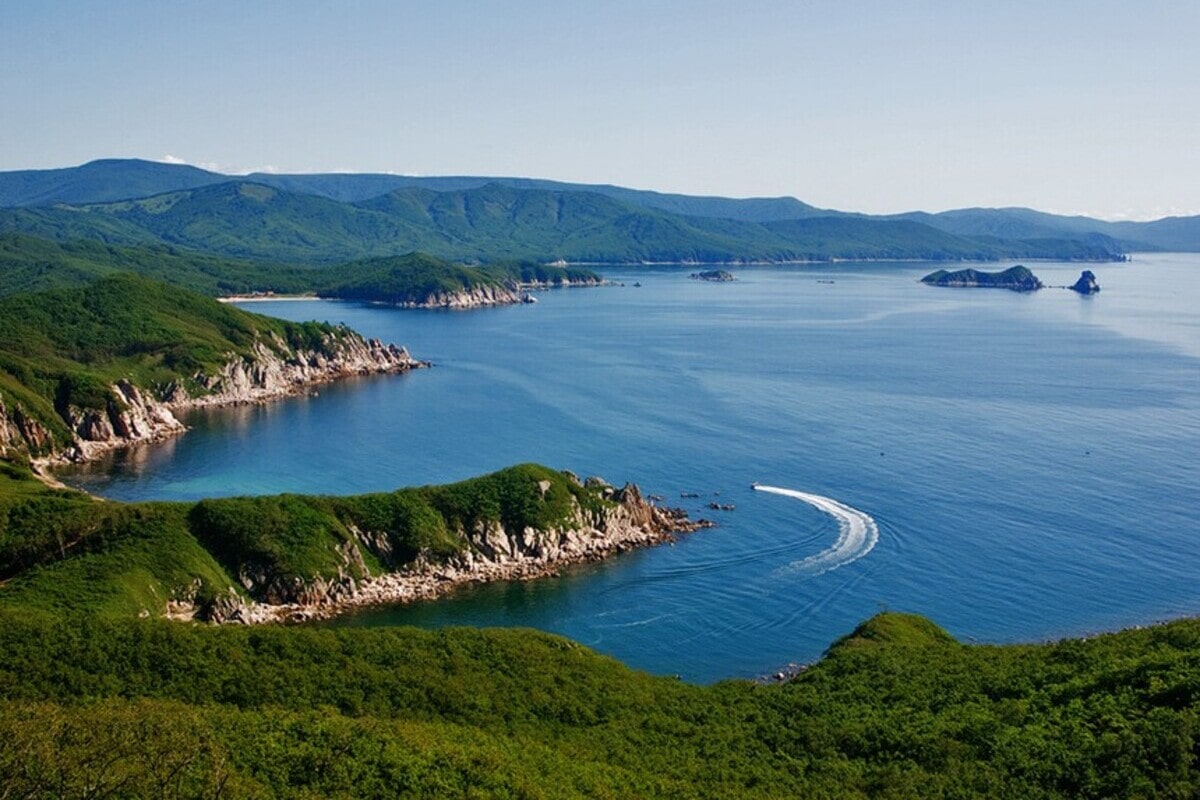The Sea of Japan is one of Asia’s lesser-known seas, yet it plays a vital role in regional climate, ecology and geopolitics. Located between Japan and the eastern coast of mainland Asia, this semi-enclosed body of water features a unique geographic structure, isolated ecosystems and a fascinating geological history. Its depths hide remarkable natural phenomena, while its coastal areas are essential for fishing, marine trade and scientific research. Below is a collection of interesting and educational facts about the Sea of Japan that you may not have known.
- The Sea of Japan is a semi-enclosed inland sea of the Pacific Ocean, connected to it by only a few narrow straits. This isolation limits water exchange with the open ocean. As a result, the sea warms more slowly, and its salinity and temperature differ significantly from other open sea areas. These conditions support a distinctive marine environment.
- The Sea of Japan borders the coasts of Japan, Russia, South Korea and North Korea. Despite its relatively compact size, it is of major economic and political importance to these countries. Key shipping routes pass through it, and it supports large-scale fishing and natural resource extraction. Several strategically important naval bases are also located along its shores.
- The maximum depth of the Sea of Japan is approximately 3,742 meters, with an average depth of about 1,750 meters. Its seabed is divided into several deep basins separated by underwater ridges. This makes the topography of the sea floor complex and uneven. Some of its deeper regions remain poorly explored.
- Seasonal ocean currents in the Sea of Japan significantly affect the climate of nearby coastal areas. In summer, the warm Tsushima Current brings humid air from the south. In winter, cold air masses dominate, causing heavy snowfall along the Japanese coast. These seasonal changes create a striking climate contrast.
- The salinity of the Sea of Japan is lower than that of the open ocean due to the inflow of numerous rivers. Major rivers such as the Amur, Tumen and Yalu contribute freshwater and nutrients to the sea. These enrich the ecosystem but also introduce pollutants from agriculture and industry. This mix of inputs influences both marine productivity and environmental health.
- The Sea of Japan is home to more than 800 species of fish and marine organisms. It hosts flounder, herring, lamprey, squid, sea urchins, crabs and many others. Japanese mackerel and flying fish are especially valued and play a key role in regional cuisine. Many of these species are commercially important.
- Scientists believe the Sea of Japan formed about 20 million years ago as a result of tectonic plate movements. Its development was accompanied by volcanic activity and shifts in the earth’s crust. Over time, the sea deepened and expanded. Geological processes continue to shape its seabed and coastline today.
- Water temperatures in the Sea of Japan vary greatly between the north and south. In the north, temperatures can drop to –1 °C, while in the south they can reach 26–27 °C in summer. These differences influence the distribution of marine species. Some fish prefer warmer southern waters, while others thrive in colder northern areas.
- The Sea of Japan plays a crucial role in the daily life of coastal communities. Thousands of fishermen rely on its waters for their livelihoods and food supply. Coastal towns host fishing ports, canneries and refrigerated storage facilities. Marine products from this region are exported to many countries worldwide.
- Natural phenomena such as waterspouts, fog and thermal inversions are common in the Sea of Japan. These conditions can make navigation and fishing difficult, especially in winter. Sudden storms may also occur in these areas. As a result, accurate weather forecasts are essential for maritime safety.
- The name “Sea of Japan” has been the subject of international debate. In South Korea, it is referred to as the East Sea, as the name Sea of Japan is viewed as a remnant of colonial history. Discussions over the name continue in the United Nations and other international forums. Currently, the name Sea of Japan remains the most widely used designation globally.
- Coastal regions of the Sea of Japan are rich in cultural heritage and natural attractions. Historic Japanese towns, Buddhist temples and hot spring resorts are located along its shores. On the Russian side lies Vladivostok, a strategic port and scientific hub. These areas also attract tourists and researchers.
- Ocean currents and winds in the Sea of Japan influence bird migration patterns. During spring and autumn, tens of species of migratory birds stop here. Ducks, geese, gulls, cormorants and herons are especially common. Several islands are designated as protected zones to conserve these bird populations.
- The seabed of the Sea of Japan contains significant reserves of natural resources, including gas hydrates, mineral deposits and offshore oil. Many of these remain untapped due to technological challenges. However, exploration efforts are ongoing. The future development of these resources could significantly impact the region’s economy.
These incredible facts about the Sea of Japan reveal just how complex, rich and fascinating this body of water truly is. It combines natural beauty with scientific value, economic relevance and strategic importance. The role of the Sea of Japan extends far beyond the boundaries of a map. Its depths and coastlines deserve attention, study and protection for future generations.





